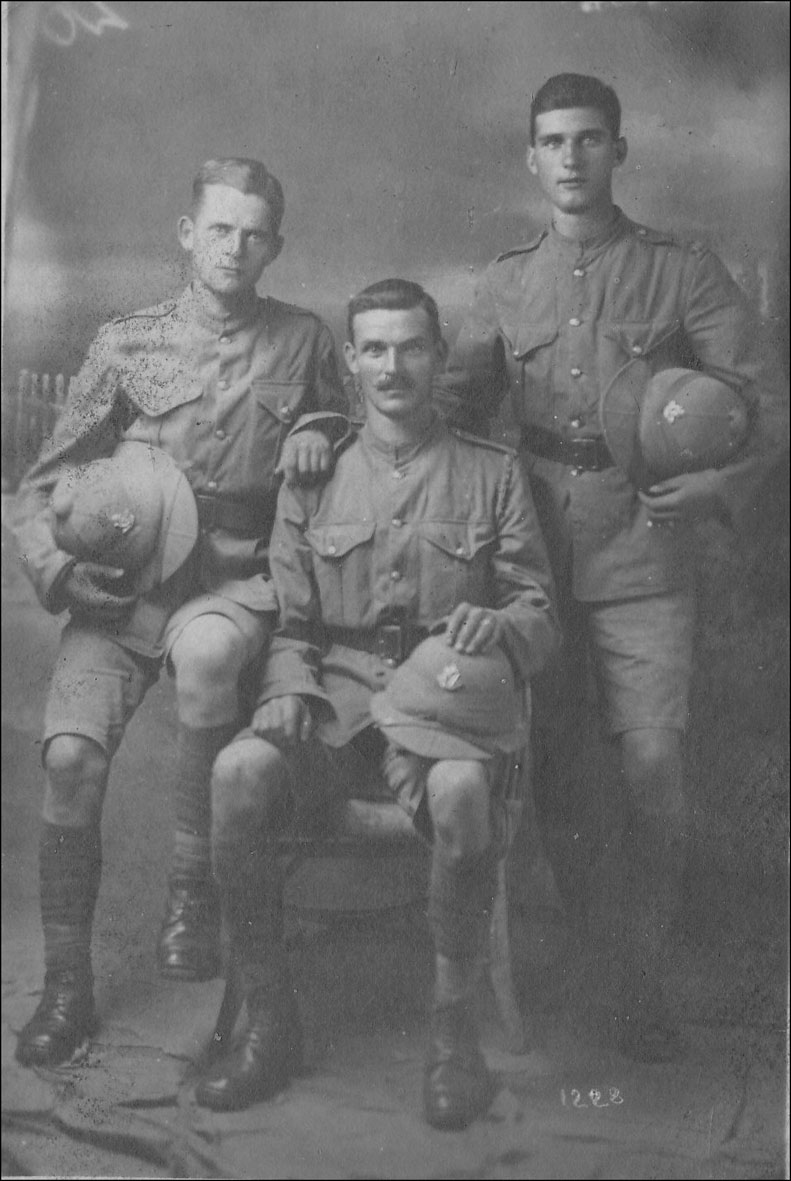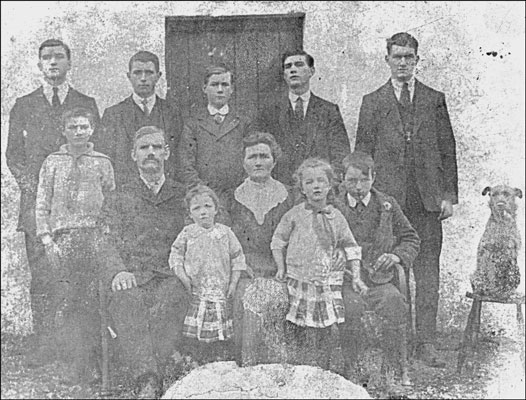Private Charles Magill

Magill (right) in Egypt, August-September 1917
Charles Magill was born on 26 November 1896 at Corkermain, Cairncastle, County Antrim, the fifth of twelve children of farmer (later road contractor) Charles Magill and his wife Annie (nee Connolly). By the time of the 1911 Census he was living at Corkermain with his parents and eight siblings.
Magill enlisted in the North Irish Horse at Larne on 11 December 1915, joining the regiment at Antrim five days later (No.2043). He gave his occupation at the time as horseman and assistant contractor. On 17 July 1916 while in training at Antrim he was awarded 7 days' confined to camp for "creating a disturbance in camp after 'lights out'".
On 26 November 1916 he embarked for France, where he was posted to B or C Squadron of the 2nd North Irish Horse Regiment.
In August 1917 orders came that the 2nd NIH Regiment would be disbanded and the men transferred to the infantry. Magill was one of 70 men given the job of conducting the regiment's horses to Egypt. They embarked from Marseilles on board HMT Bohemian on 25 August. After a month at Alexandria they returned to France, arriving at the 36th (Ulster) Division Infantry Base Depot at Harfleur on 5 October. After just a few days of infantry training they were posted to the 9th (Service) Battalion, Royal Irish Fusiliers – renamed the 9th (North Irish Horse) Battalion, joining it in the field at Ruyaulcourt on 12 October. Magill was issued regimental number 41592.
It is likely that Magill saw action with the battalion during the Battle of Cambrai in November and December 1917. It may have been at this time that, as he later recalled to his daughter, "he was caught in an explosion and buried alive, but managed to claw his way out of the earth."
On 28 December 1917 Magill was one of twenty-four former North Irish Horsemen who transferred from the Royal Irish Fusiliers to the Tank Corps (No.304865). Following training at the Tank Corps Depot at Bovington near Wareham, Dorset, Magill was posted to the 17th (Armoured Car) Battalion with the rank of gunner.
On 27 April 1918 he returned to France with the 17th Battalion, which was supplied with sixteen Austin 3rd Series Armoured Cars originally built for Russia but withheld following the revolution there.

One of the Austin Armoured Cars sent to Russia
The Battalion's first operations were in support of the 1st French Army at Ravenel in the Battle of the Matz from 10 to 15 June, and then in support of American infantry on the River Ourcq in July. Returning to the British Army, the 17th Battalion was very successful in support of the 5th and 1st Australian Divisions at the Battle of Amiens on 8 and 9 August. The Austins were towed in pairs by tanks across the battlefield. Once they reached better ground on the other side of the lines, they ranged freely.
Further success was achieved on 21 August in cooperation with Whippet tanks. Casualties on that day were one driver killed and one officer, three gunners and three drivers wounded, together with one driver and one gunner missing. Magill was one of the day's casualties, shot in the right foot. According to his daughter:
... his leg was badly injured by shrapnel – he wandered, hidden in the woods with his leg injury and spotted a Salvation Army officer in a clearing and called out to him. He was taken by him to a field hospital, where they wanted to amputate his leg; but my father refused.
After treatment at the 14th Field Ambulance, Magill was taken to the No.3 Stationary Hospital at Rouen, and on 23 August evacuated to England. He was treated at Netley then Holywood. After his recovery and a short period of leave, on 13 December 1918 he was attached to the reserve unit of the Tank Corps at Wareham, and in January 1919 to the 22nd (Light) Battalion at Bovington. Magill was demobilised and transferred to Class Z, Army Reserve, on 13 March 1919.
On his demobilisation Magill joined the Royal Irish Constabulary (No.69964), serving at Roscommon, Westmeath, Gormanston, Athlone and in a motor transport company until 10 August 1922, when the force was disbanded.
In August 1923 Magill emigrated to Canada, where he worked as a ranch-hand before moving to New York, where a number of his family members lived. There he married Kathleen Lipsett in 1929. He died in October 1972 at his home in Yonkers, New York.
All six of Magill's brothers served in the Royal Irish or Royal Ulster Constabulary. Four of them – Davy, Jim, Pat and John – were also celebrated boxers.

Magill (standing, second from right) with his family around 1915.
Images and some of the information above kindly provided by Paul Magill in The Magills of the Meetinghouse, Cairncastle.
